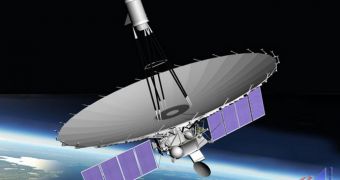After numerous delays and setbacks, the Russian Federal Space Agency (RosCosmos) finally managed to launch a complex radio telescope into planetary orbit. The event took place on Monday, July 18.
The Spektr-R observatory is meant to conduct studies of the Universe's most interesting and obscure objects, including black holes, pulsars, magnetars, and other deep-space structures that are not all that well understood at this point.
Spektr-R has been under development for more than 10 years, and was originally planned for launch sometime between 2004 and 2005. But disputes, lack of funds, and other delays caused RosCosmos to continuously postpone the launch.
In the end, after all issues plaguing the large telescope were solved, the agency gave the go-ahead yesterday. The observatory roared to the sky aboard a Russian-Ukrainian Zenit-3M delivery system which was equipped with a Fregat-SG upper stage.
This launch configuration allowed the rocket – which took off from the Baikonur Cosmodrome, in Kazakhstan – to inject the telescope in a 621-by-207,000 mile elliptical orbit around the planet. At apogee, the spacecraft is 330,000 kilometers away from Earth.
RosCosmos officials say that the observatory was developed together with scientists from more than 20 countries, as part of the international Radioastron astronomy project. The United States participated in the endeavor as well.
The 30-foot (10-meter) Spektr-R is expected to remain operational in its highly-elliptical orbit for about five years. During this time, it will be able to conduct interferometry observations with other radio telescopes on the ground, Space reports.
“The aim of the mission is to use the space telescope to conduct interferometer observations in conjunction with the global ground radio telescope network in order to obtain images, coordinates, motions and evolution of angular structure of different radio emitting objects in the universe,” a RosCosmos press release states.
“Scientists also expect to obtain more information about pulsars and interstellar plasma, black holes and neutron stars in the Milky Way,” the document goes on to say.
The Astro Space Center (ASC) of Moscow is coordinating the Russian segment of the Radioastron mission. The ASC is a division of the Russian Academy of Sciences' (RAS) Lebedev Physical Institute.

 14 DAY TRIAL //
14 DAY TRIAL //